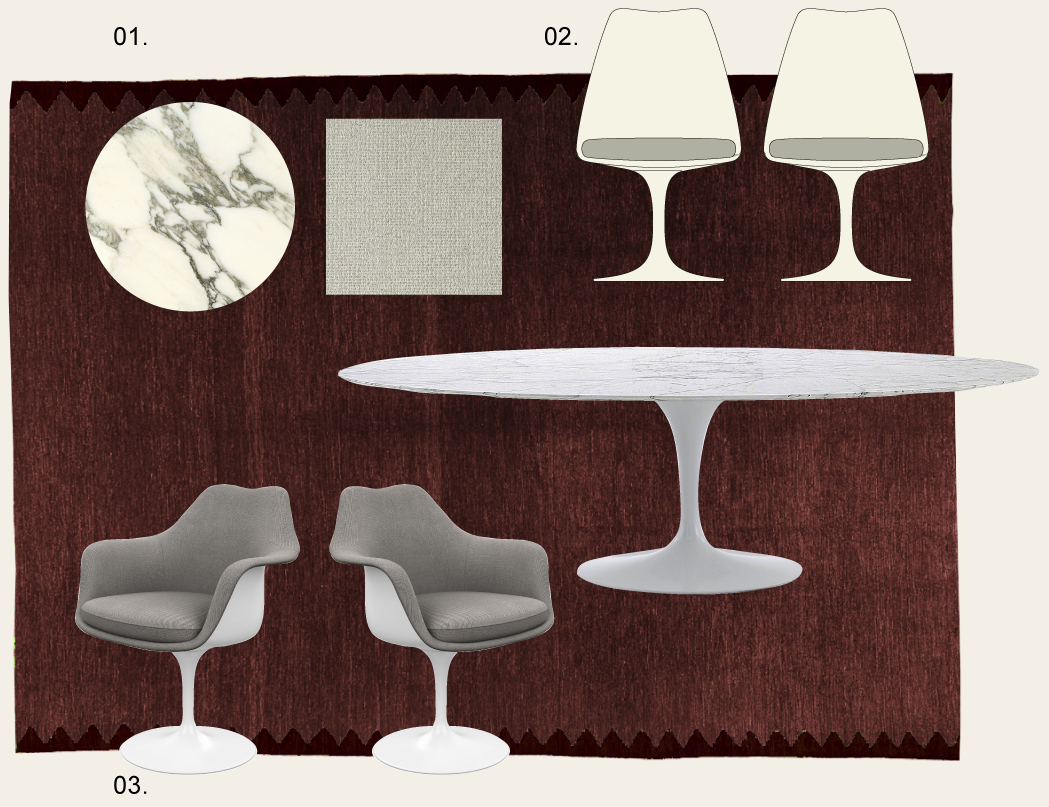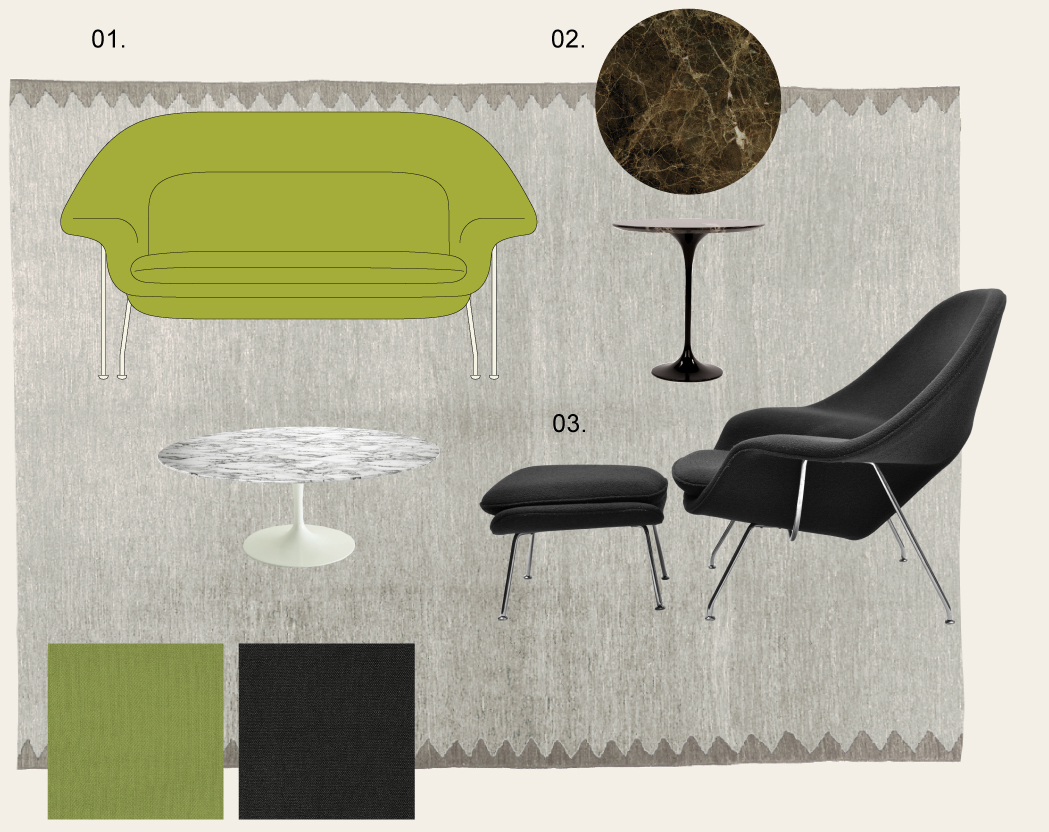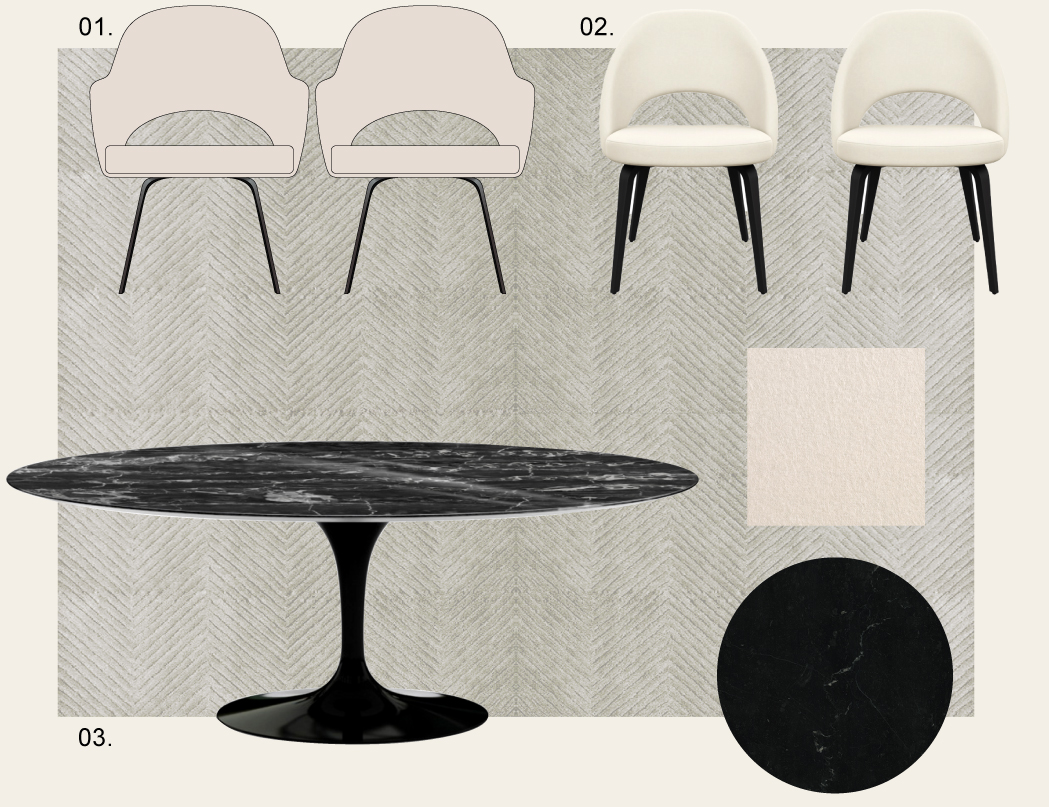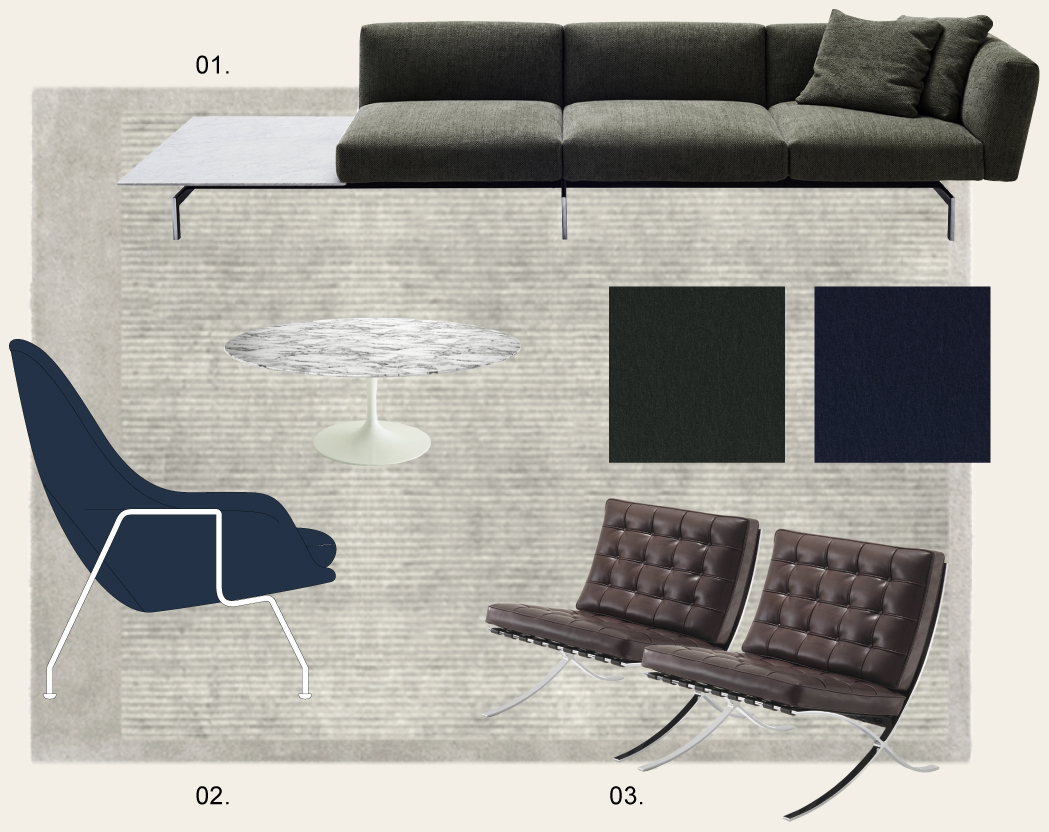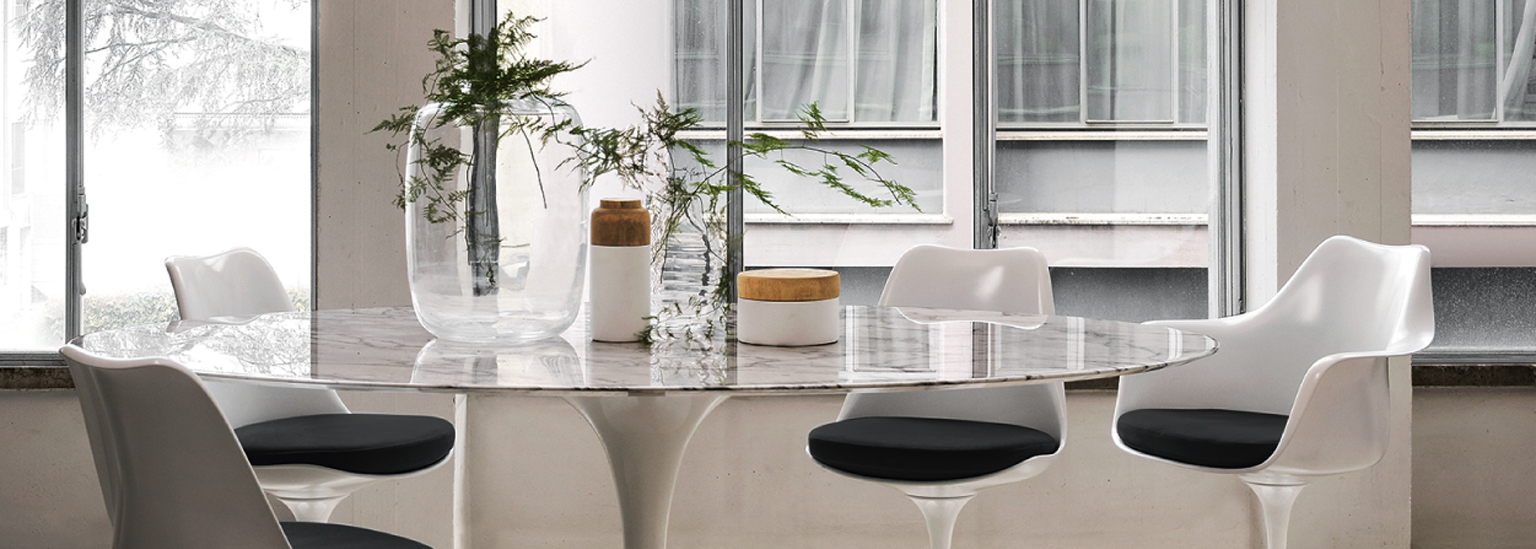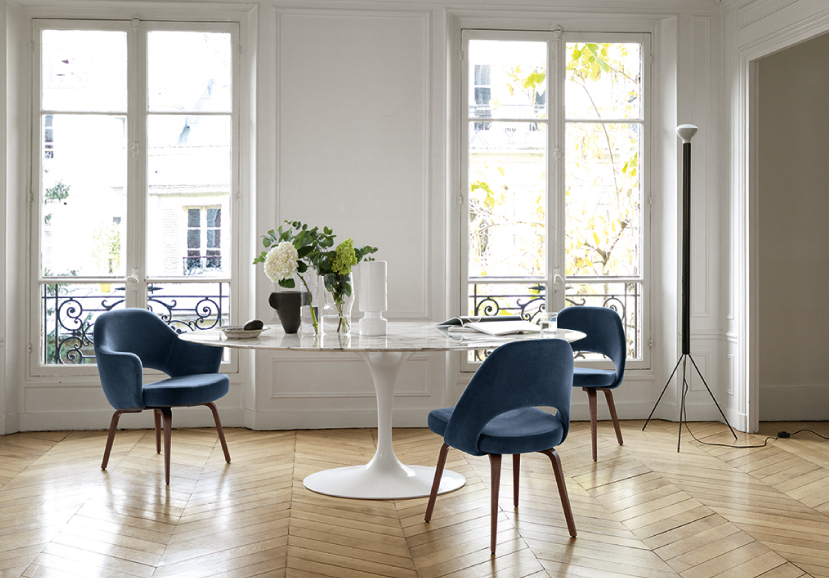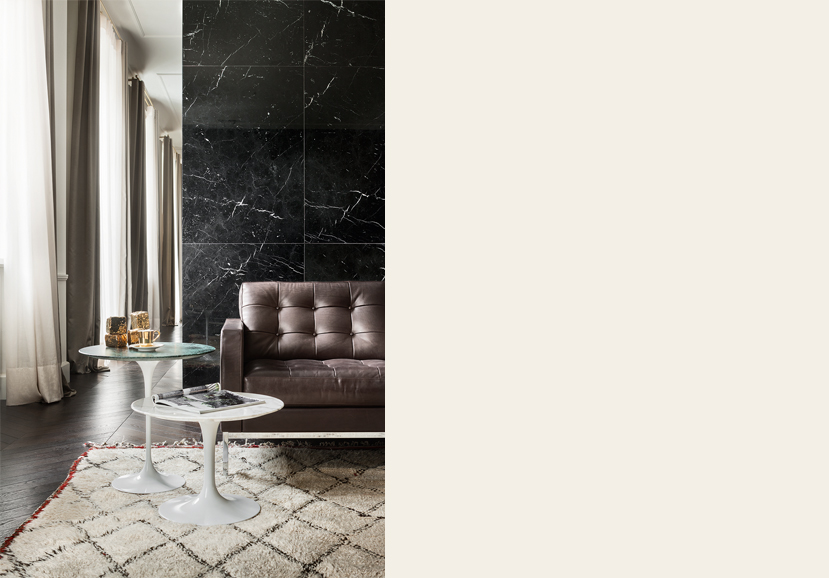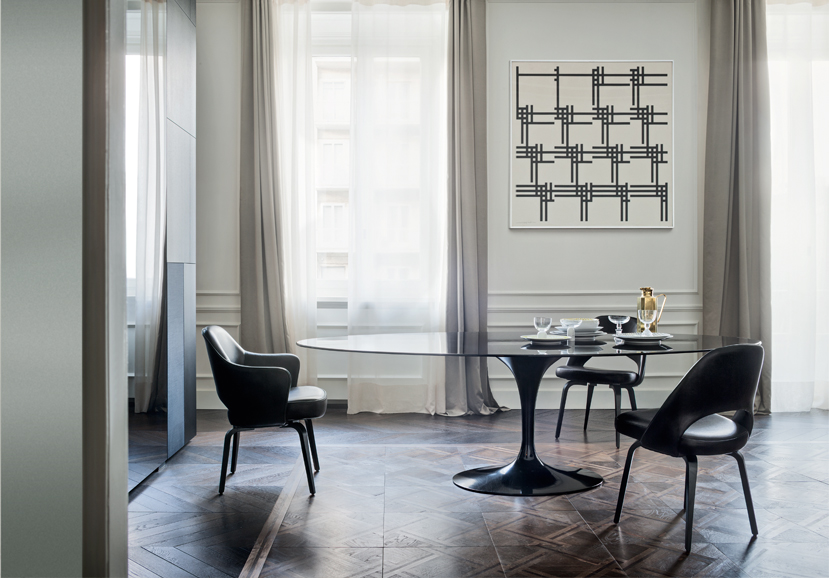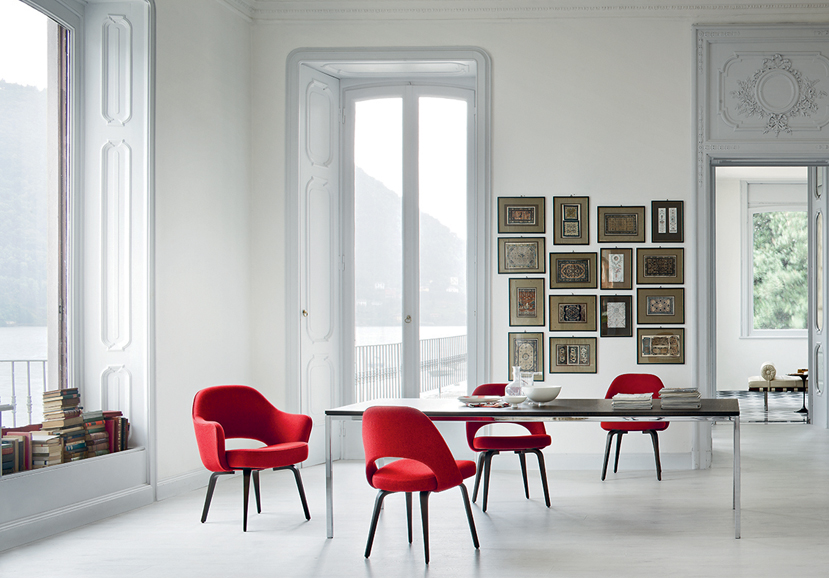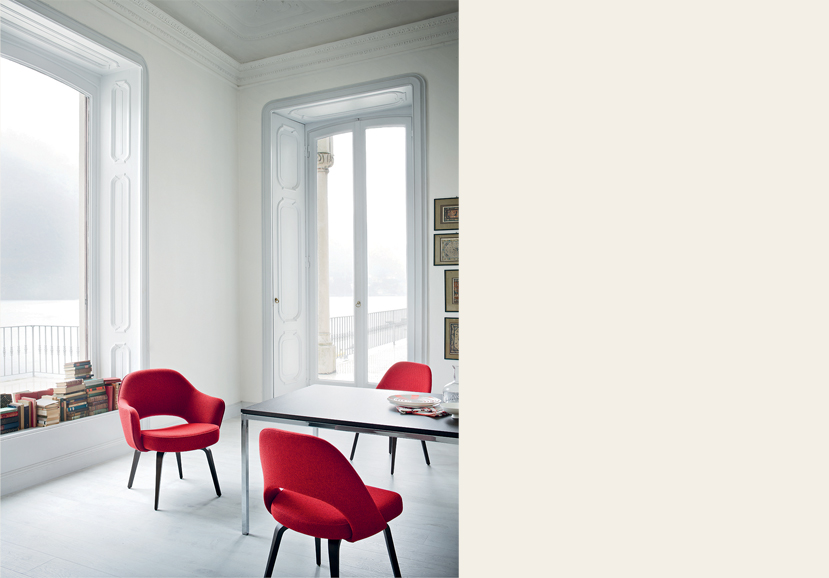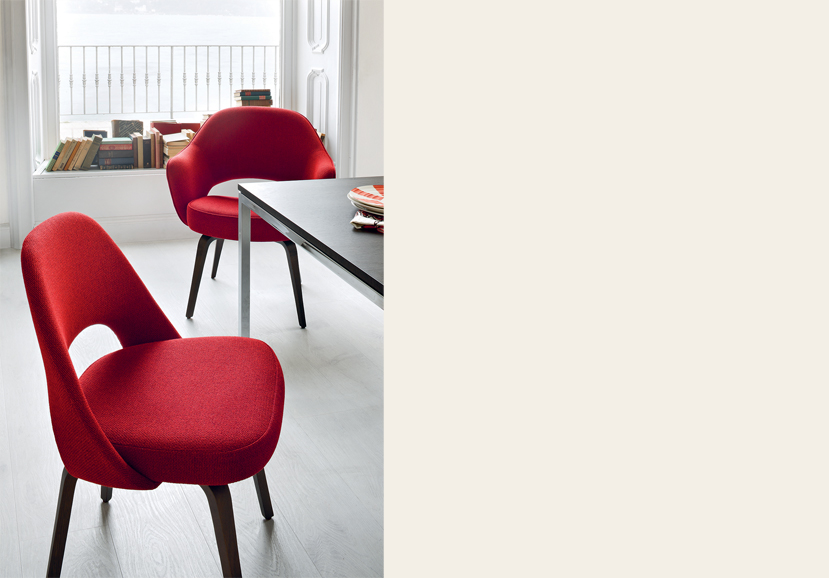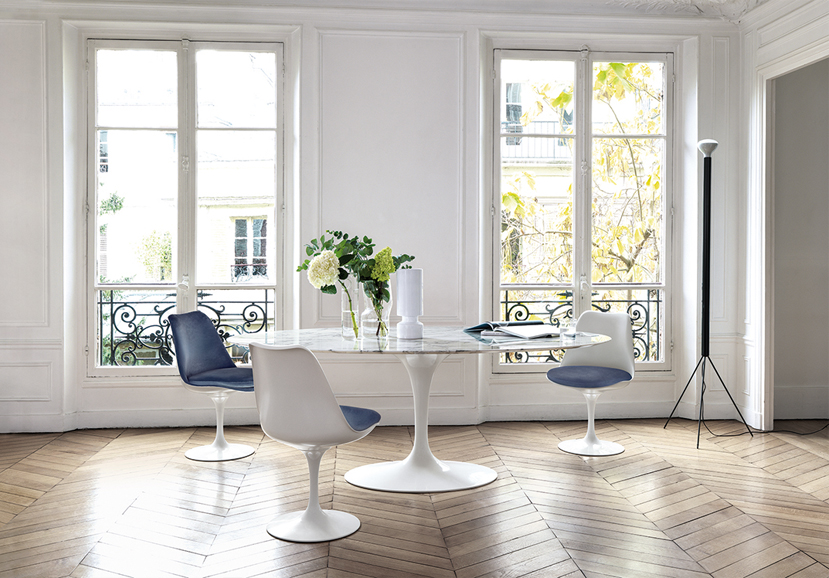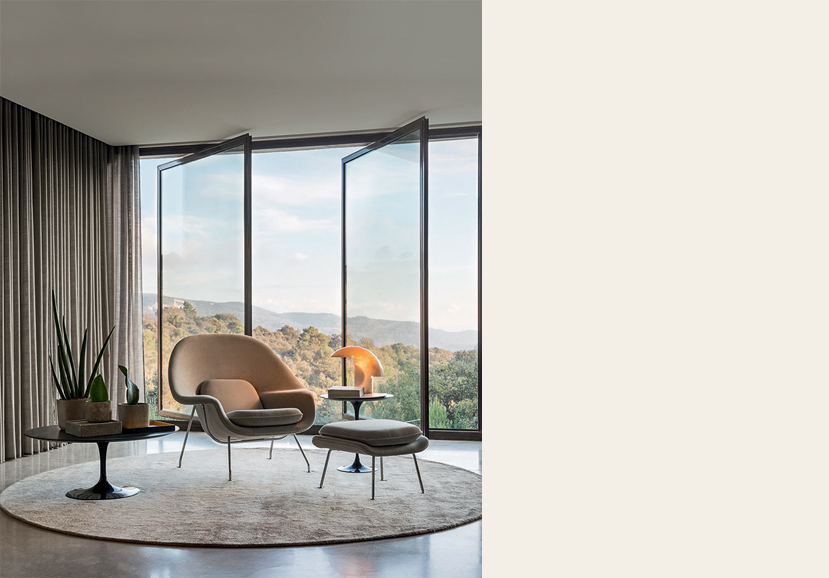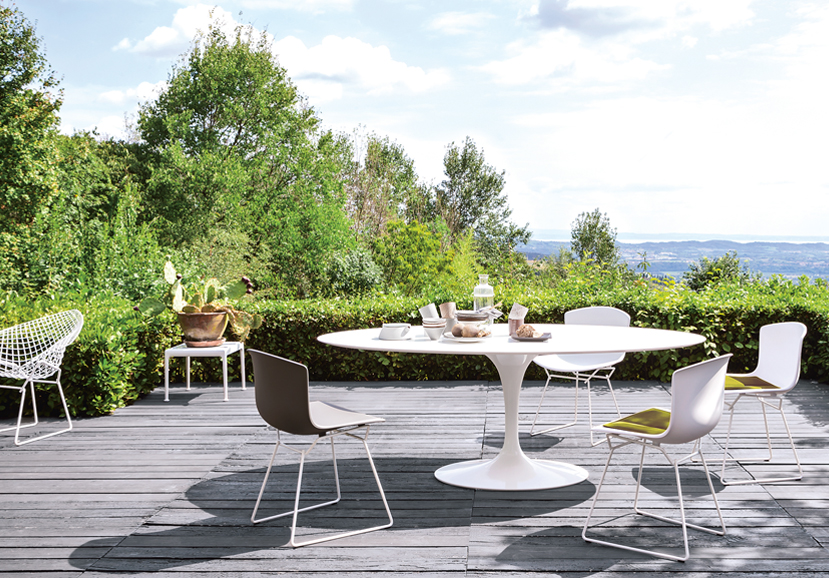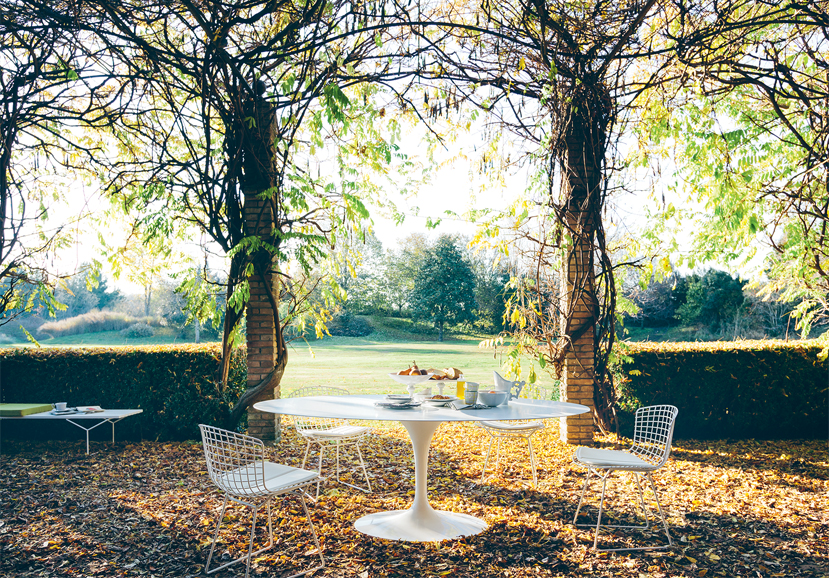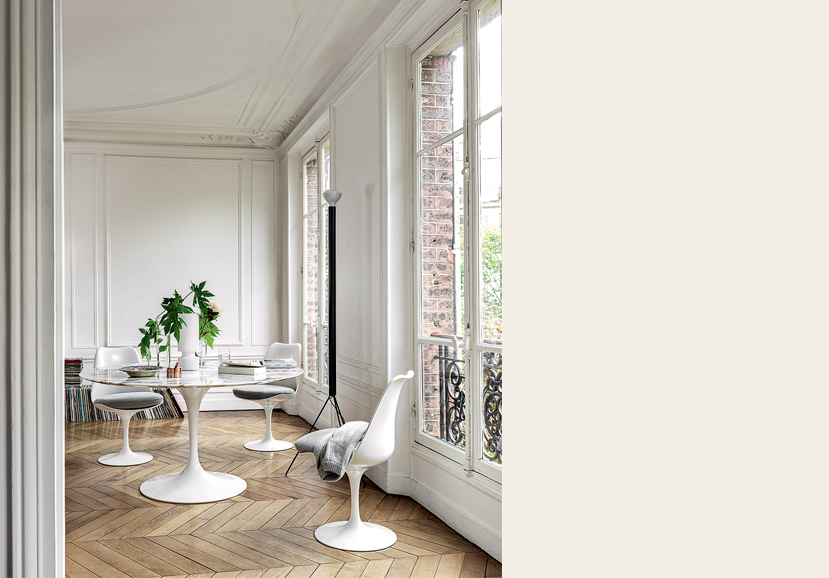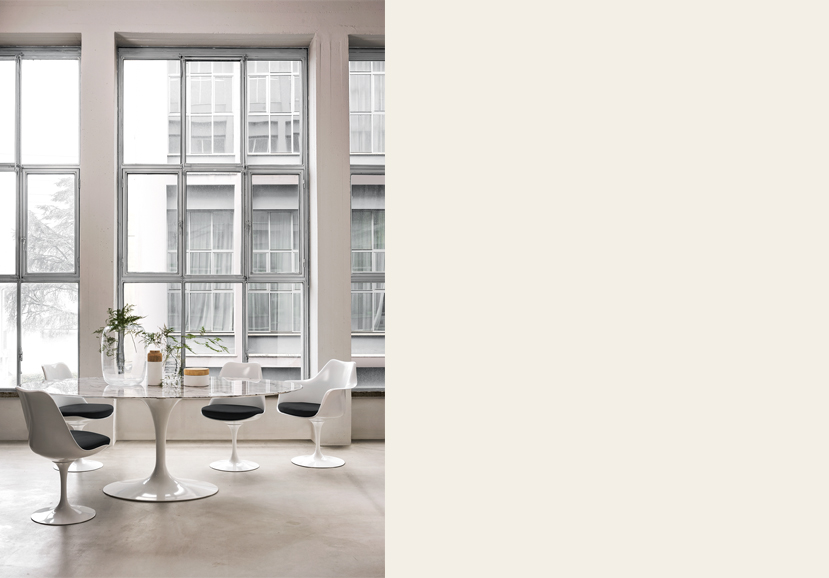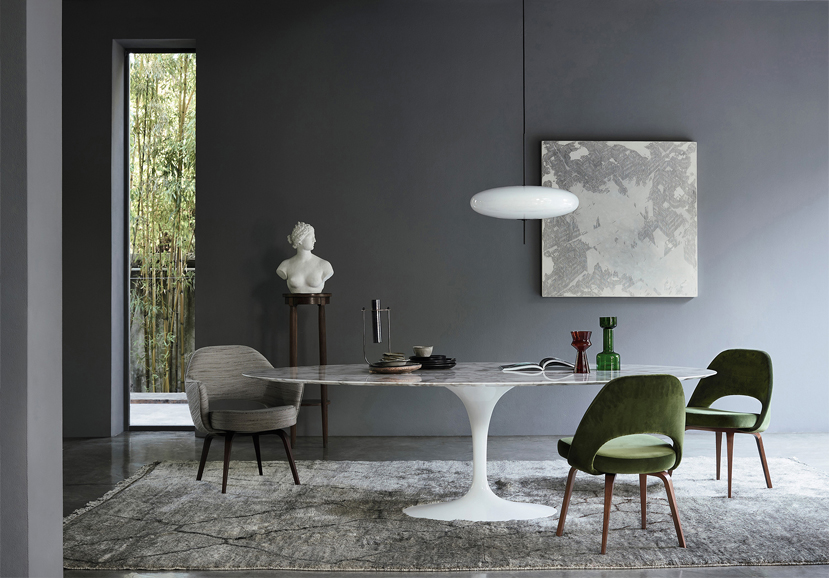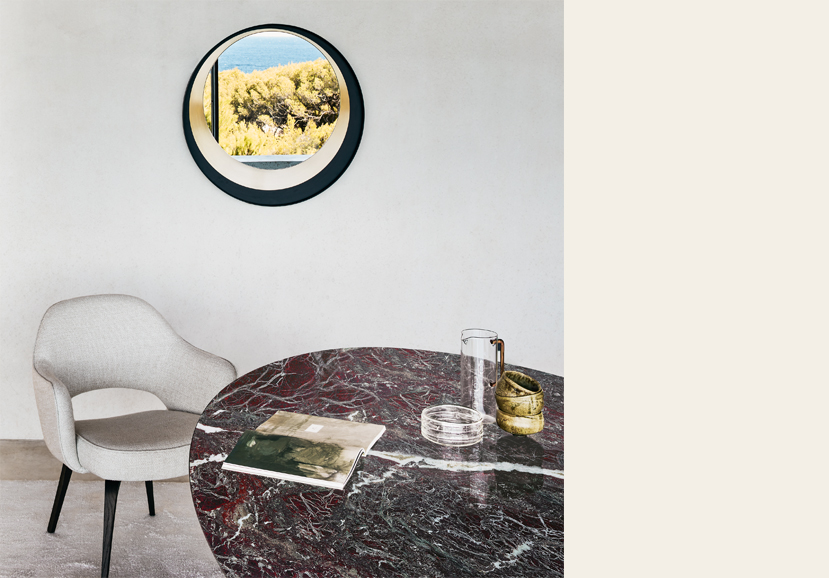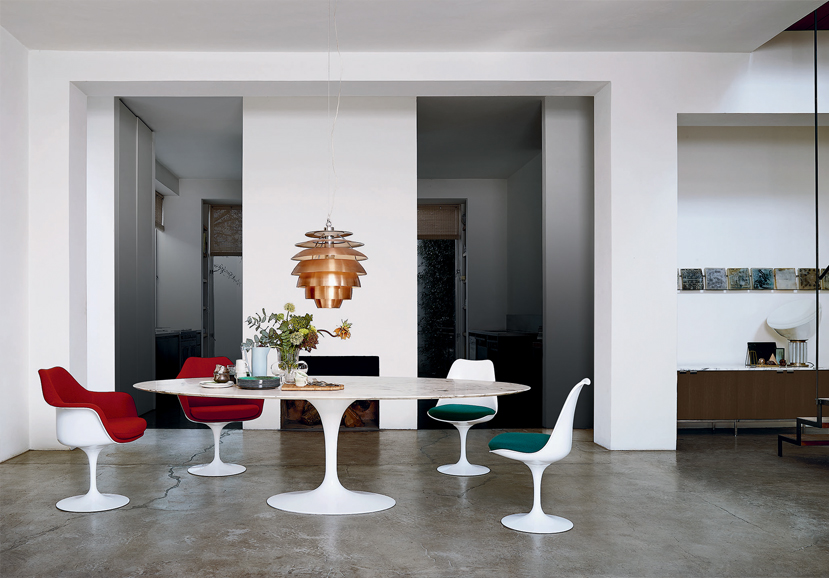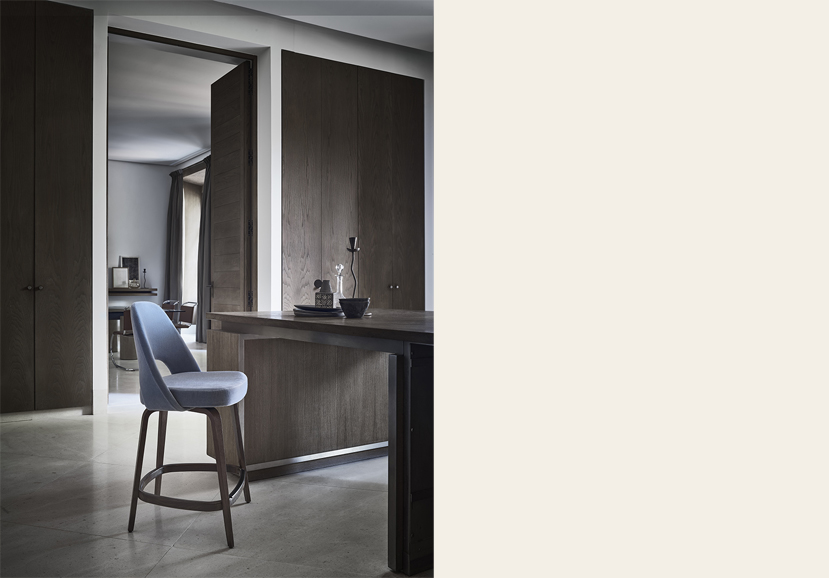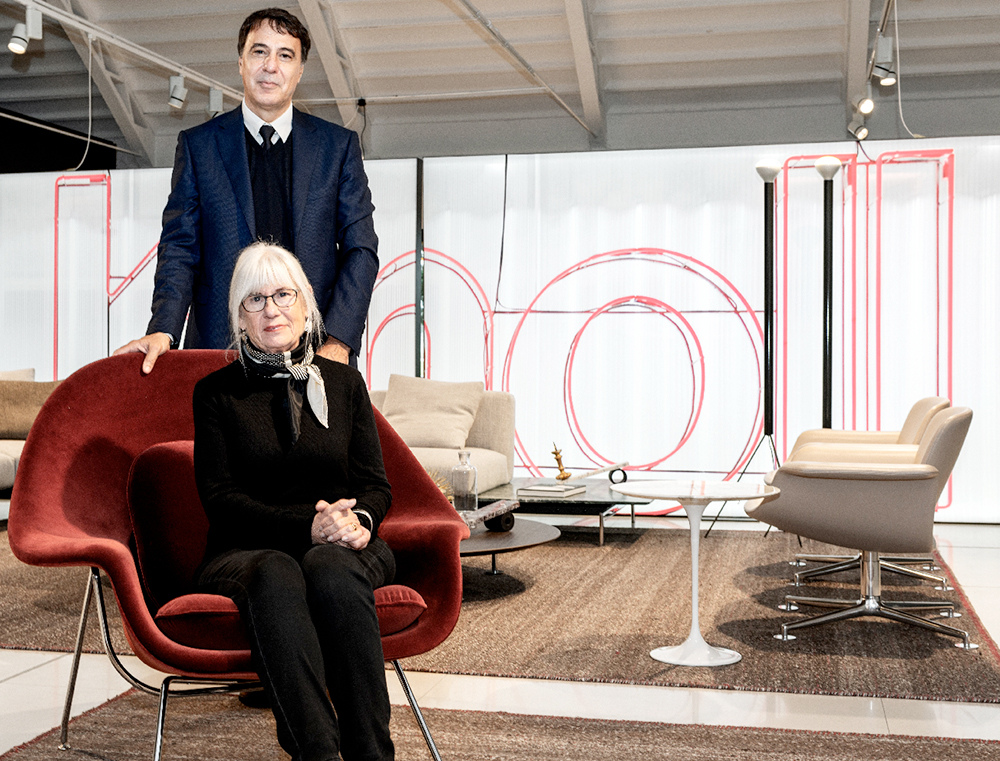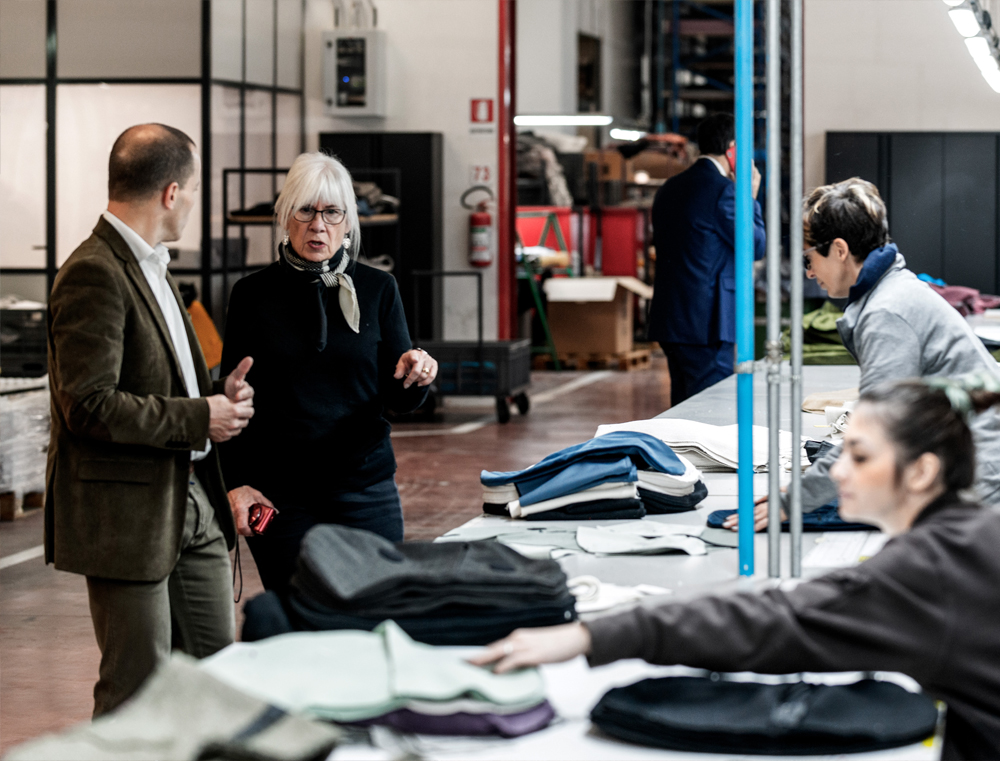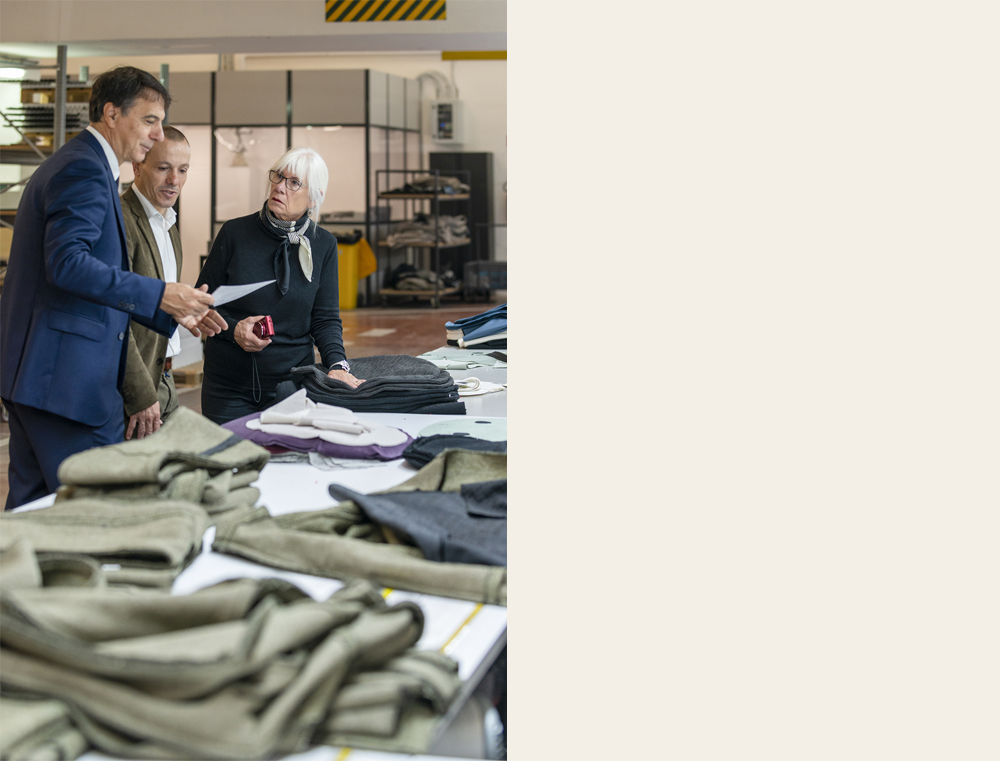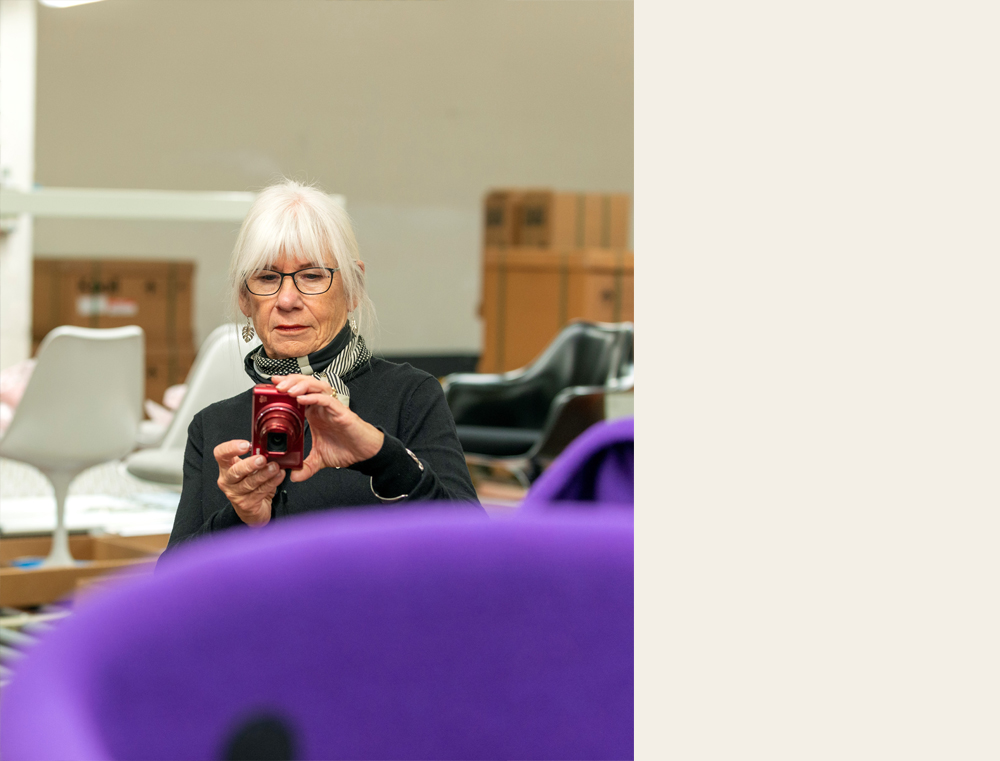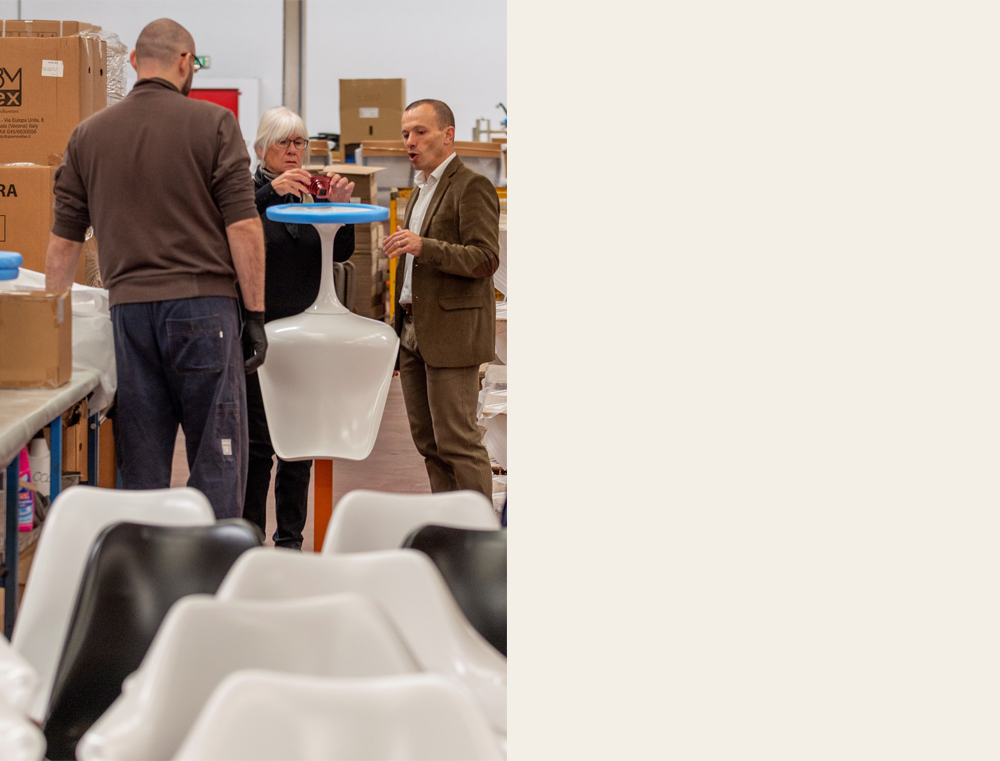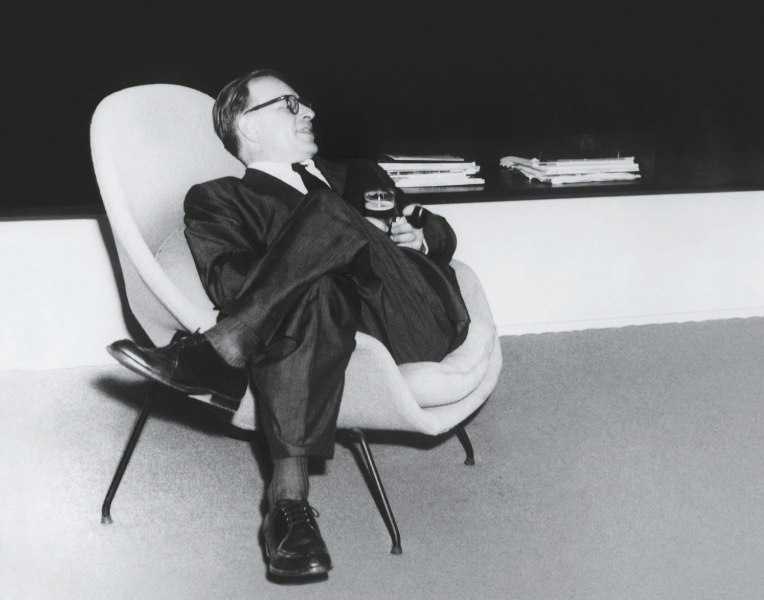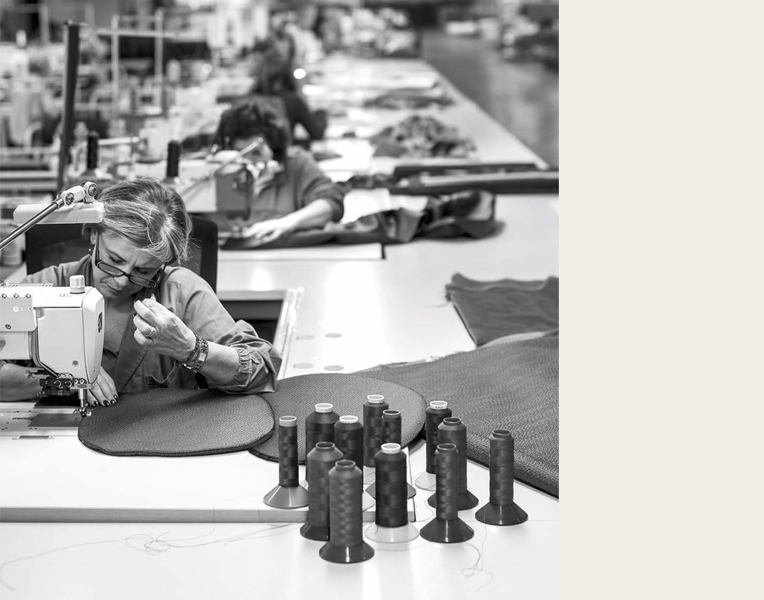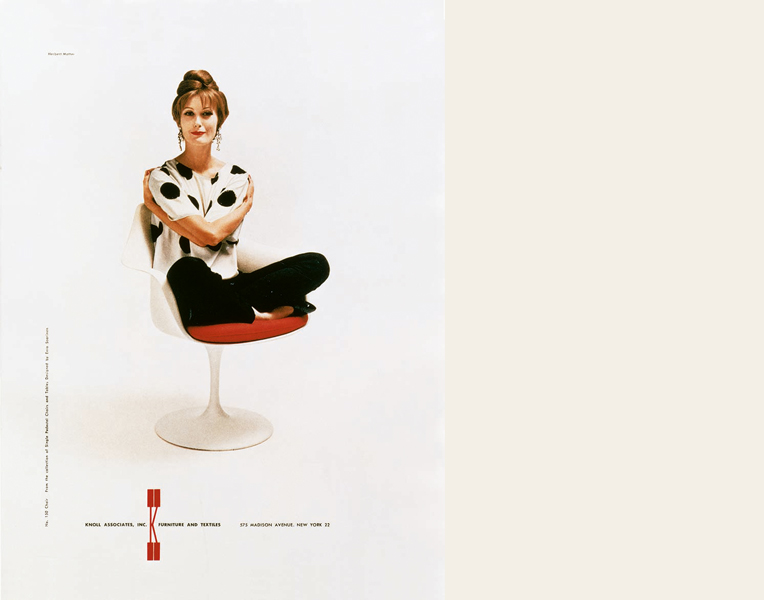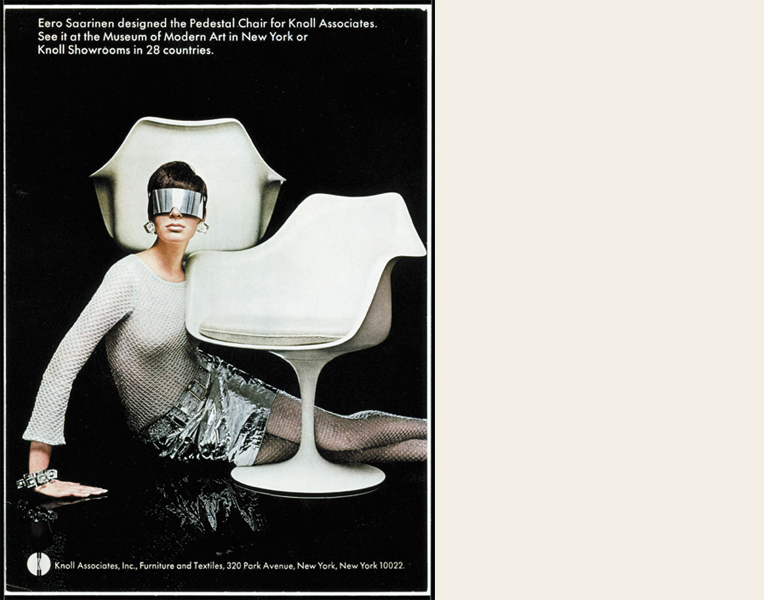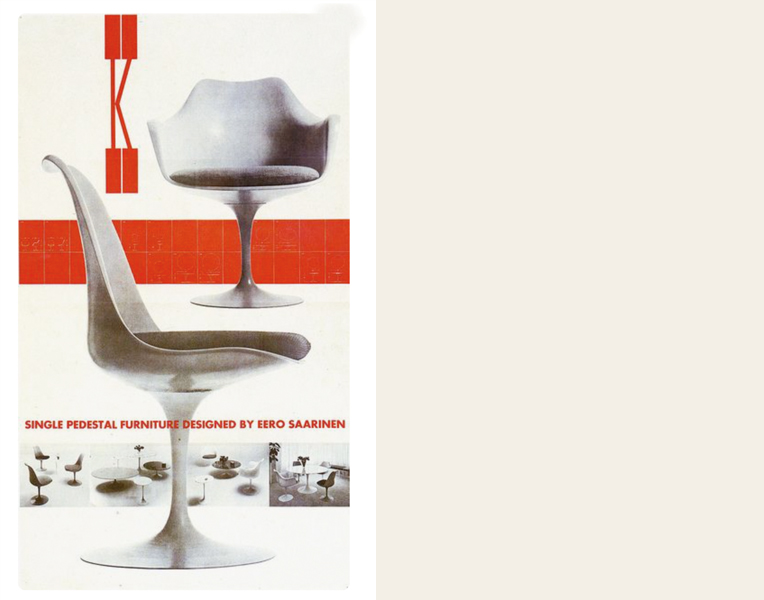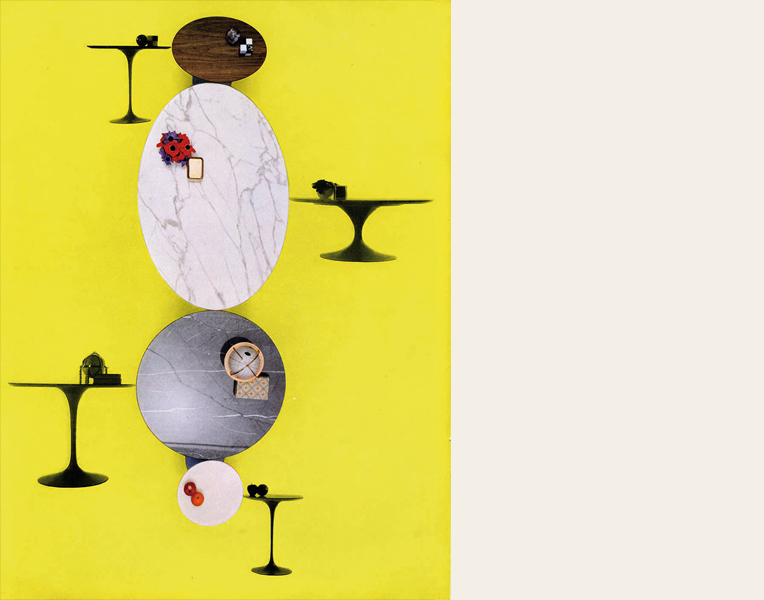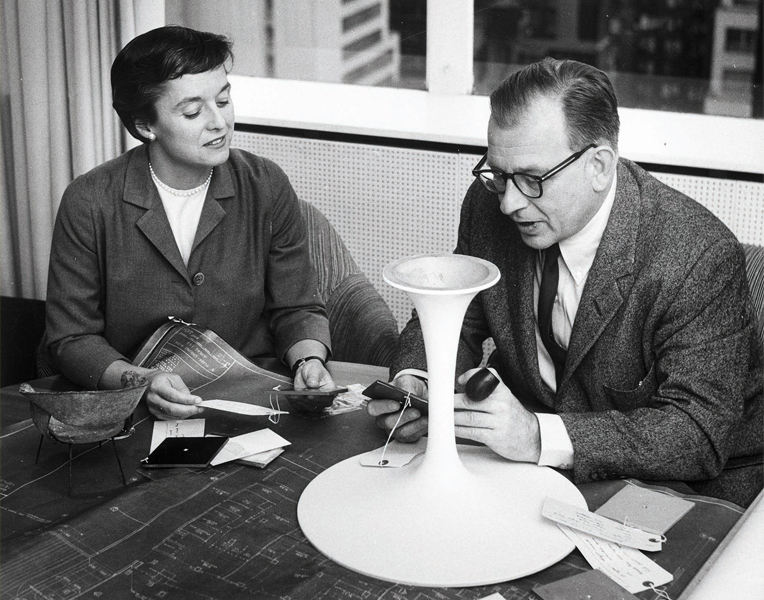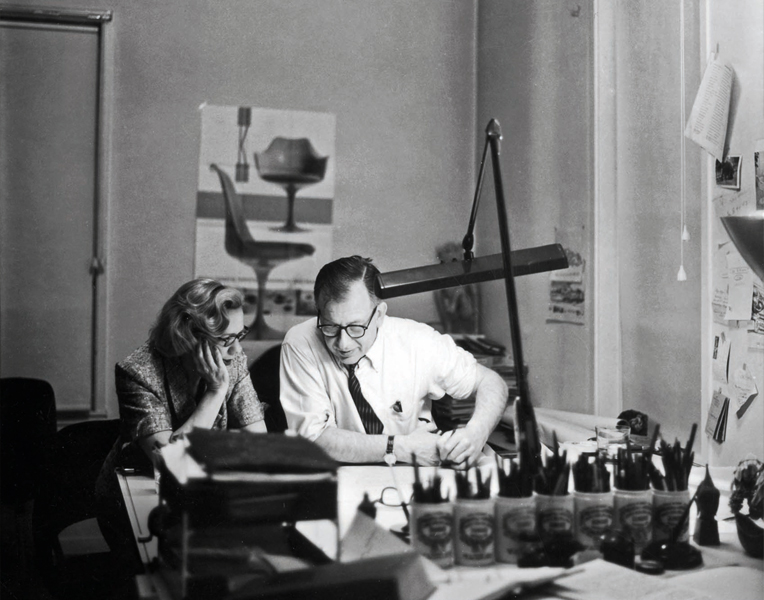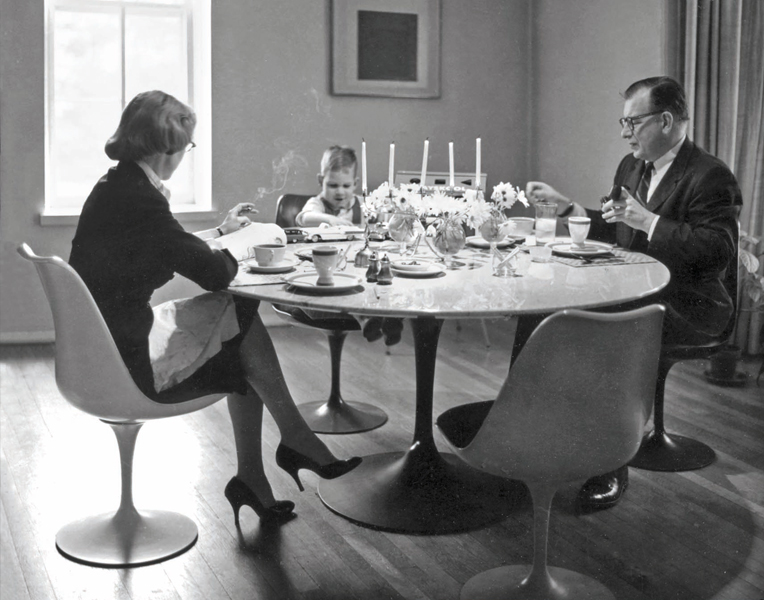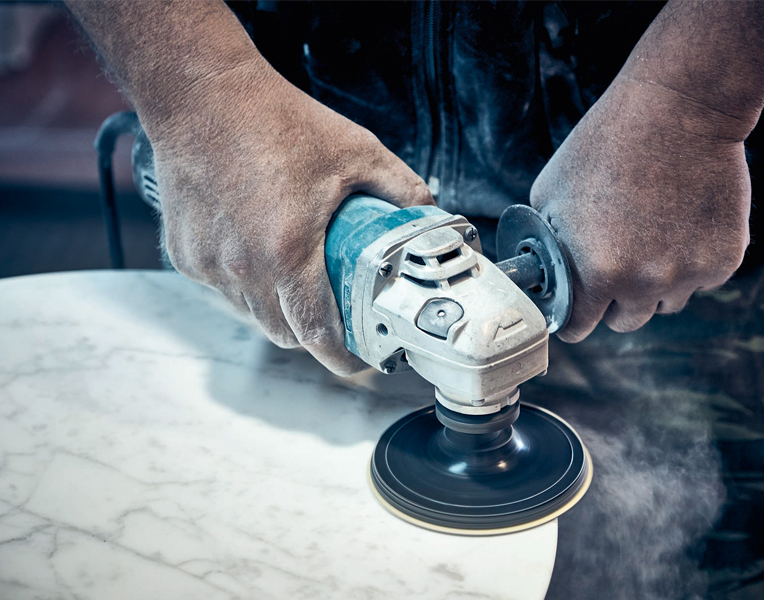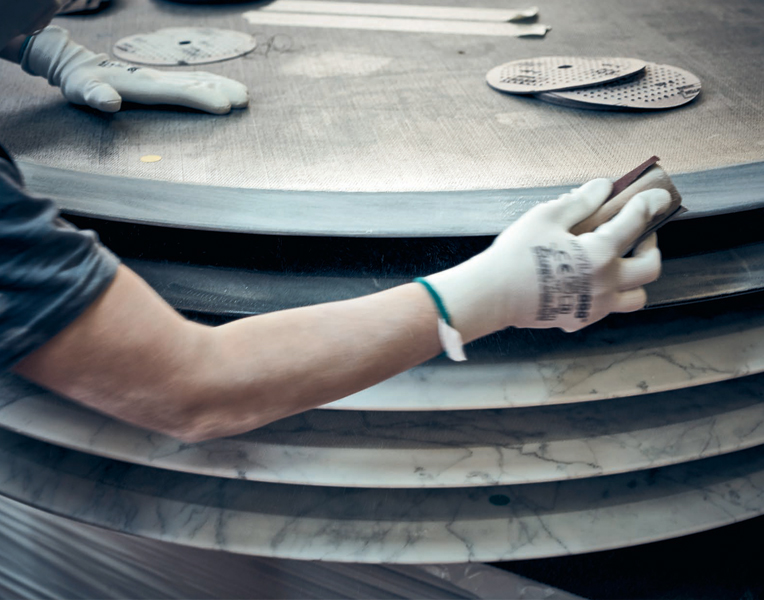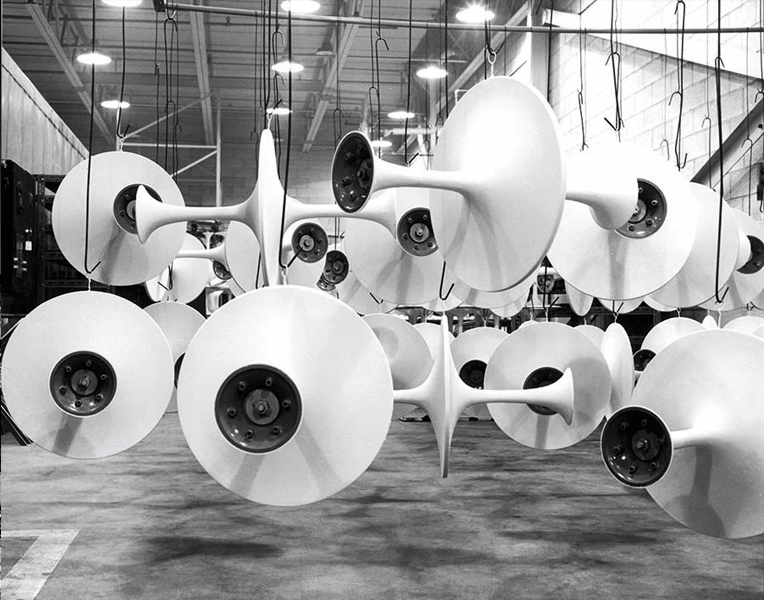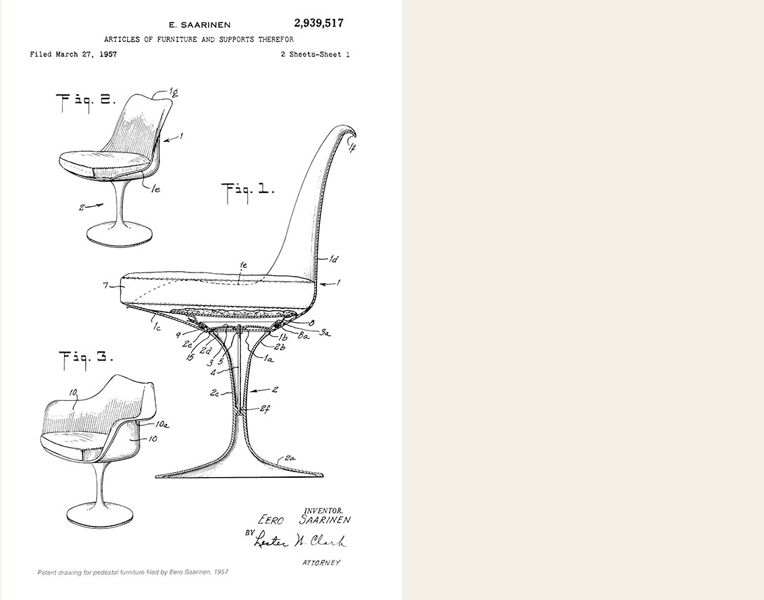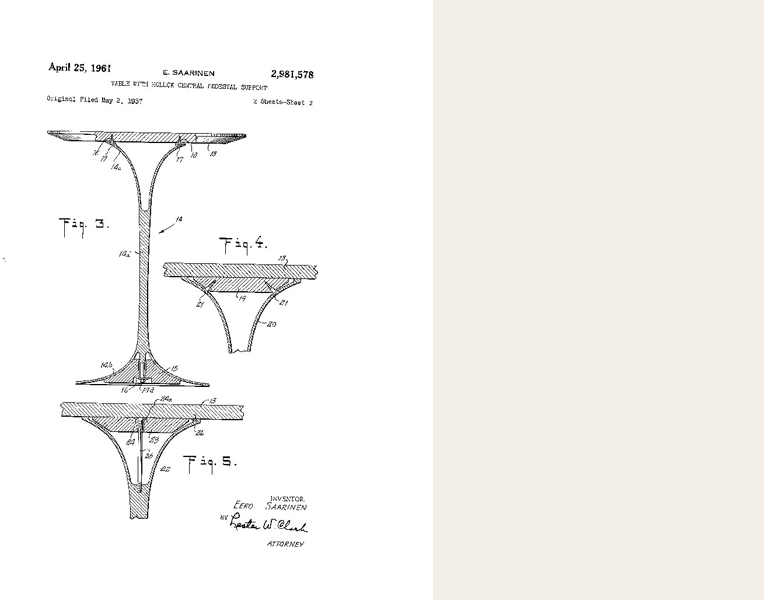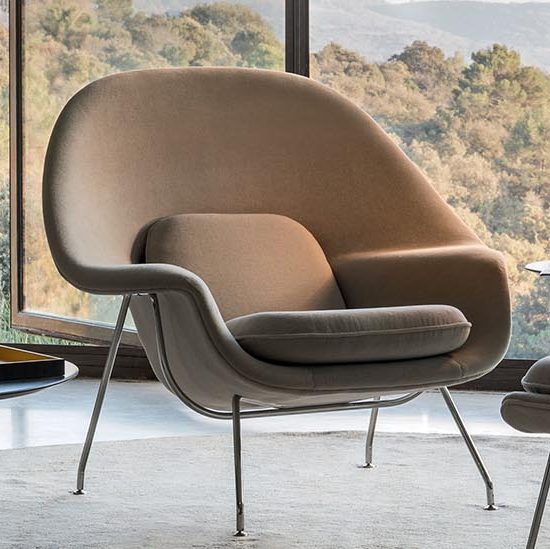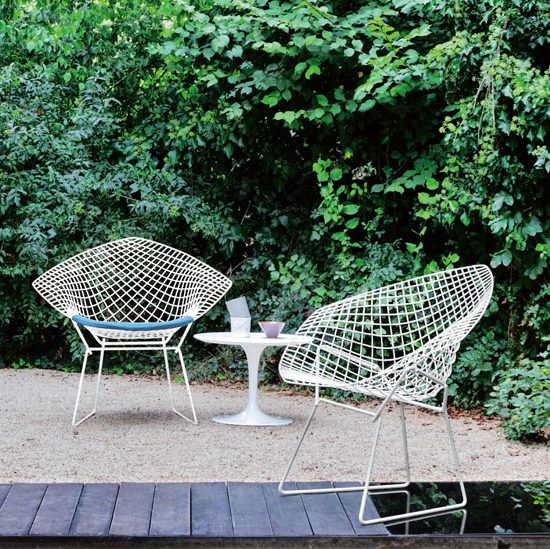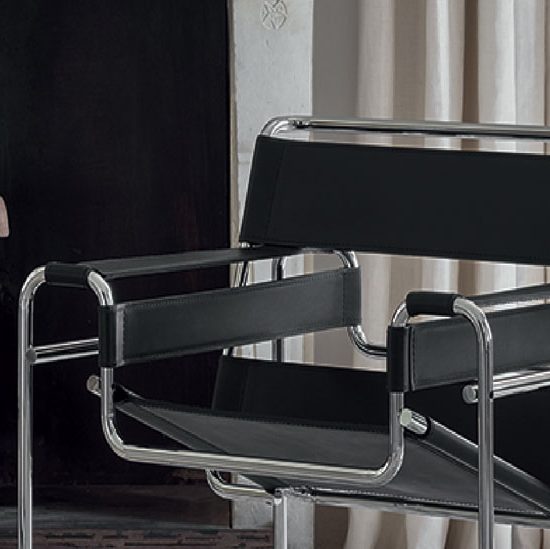Eero Saarinen
Knoll Portraits Vol.3 — Icons
“The only architecture
which interests me
is architecture as a fine art.
That is what I want to pursue.”
Eero Saarinen
Saarinen Collections — Inspirations
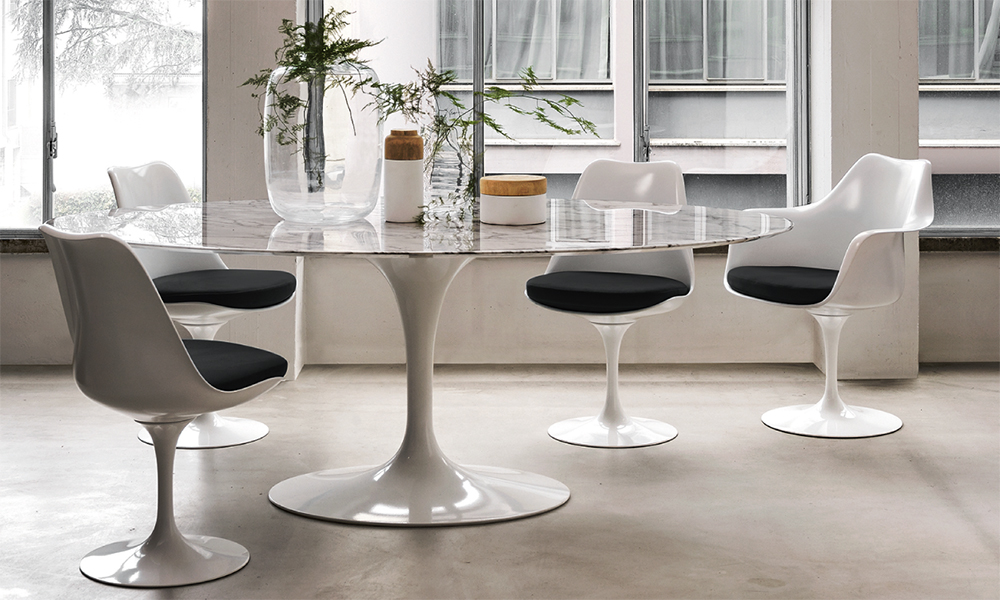
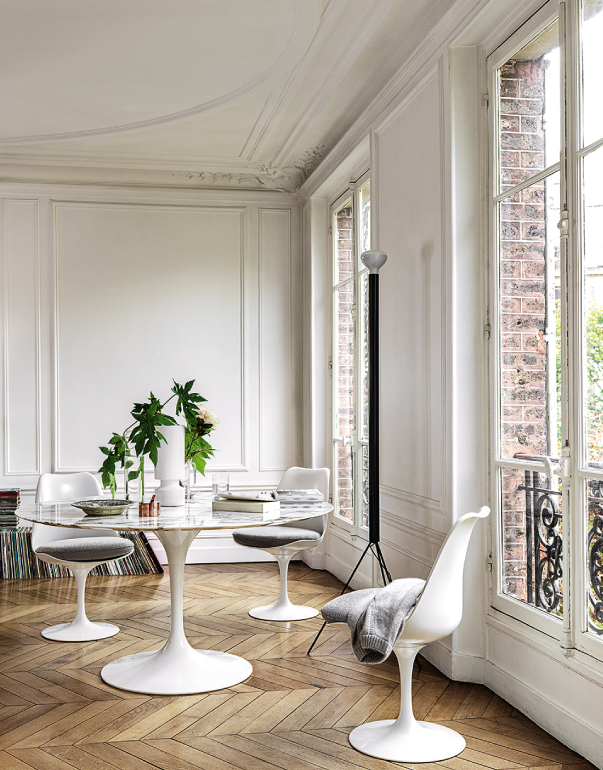
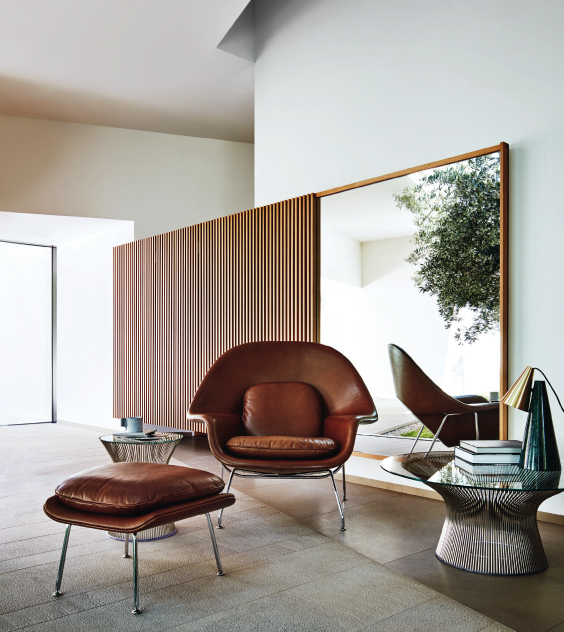
From the late 1940s through the 1950s, Eero Saarinen designed many of the most recognizable Knoll pieces, including the Tulip Chairs and Pedestal Tables, the Womb Chair, and the 70 Series Seating Collection. His designs used modern materials in graceful ways, helping establish the identity of Knoll during our formative years. That is why the Knoll and Saarinen partnership is the only one entitled to sign Saarinen original projects. Every single detail underlines his unique vision: the selection of the marble for the tops, the colour variation of the fabrics and the unmistakable profile of the pedestal Collection.
An Ancient City and A Modern Tradition — Susan Saarinen
“To design is to create a plan or specification for the construction of a building, an object, a system or an activity. In order to design something well, the designer must create something innovative, useful, simple, honest, understandable, safe for the environment, long lasting, aesthetic, unassuming and thorough down to the last detail. The same care taken during the design phase must be taken during construction or manufacture or the process fails to be thorough down to the last detail. During a few short and wonderful days, with Demetrio Apolloni, President of Knoll Europe, and his superb team, I toured the Knoll manufacturing works in Foligno and the marble factory nearby to observe the attention to detail, the respectful innovations and the dedication to manufacturing excellence in every corner of their workshops. The team even found a way to explain, through brilliantly short films, each step of the process for each product they manufacture to explain why it is important to do what they do the way they do it. Good or great design and meticulous care in the creation of things enhances our quality of life. Knoll, in all its capacities, continues to influence modern design, sustaining the quality and the relationships so important to the process of innovation, business and life.”
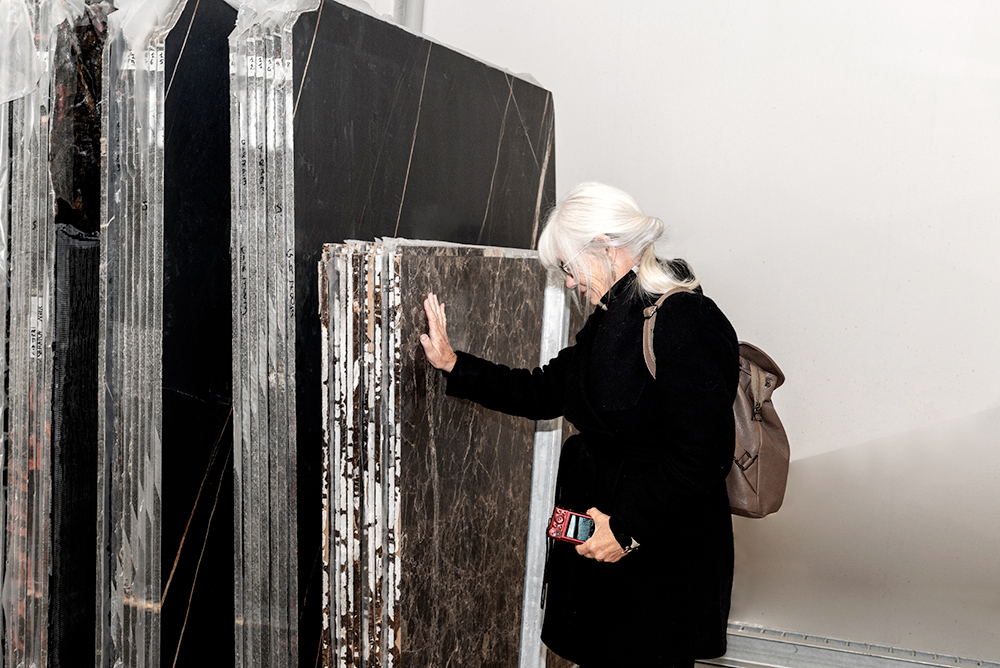
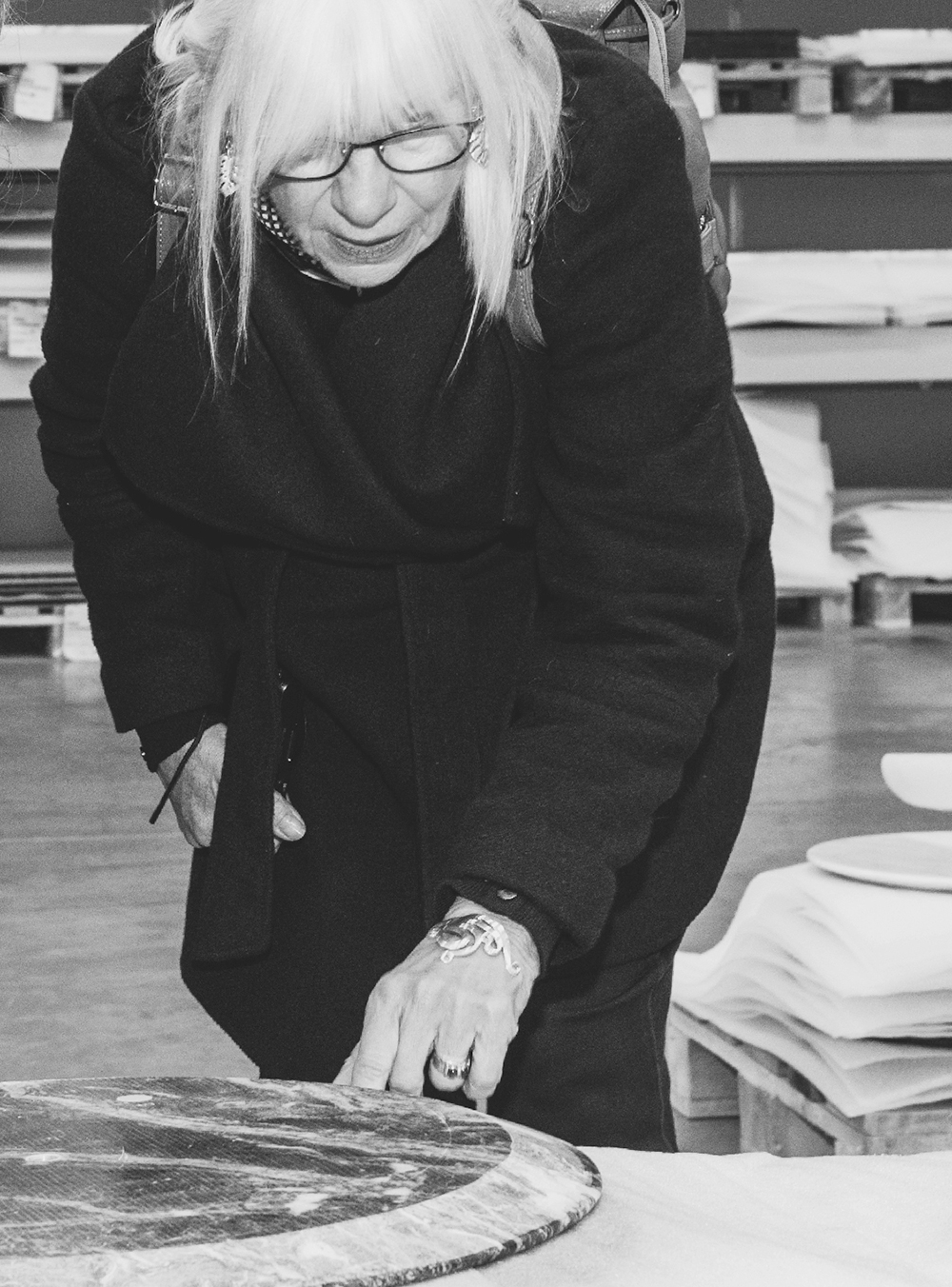
Eero Saarinen — Cabinet of curiosities
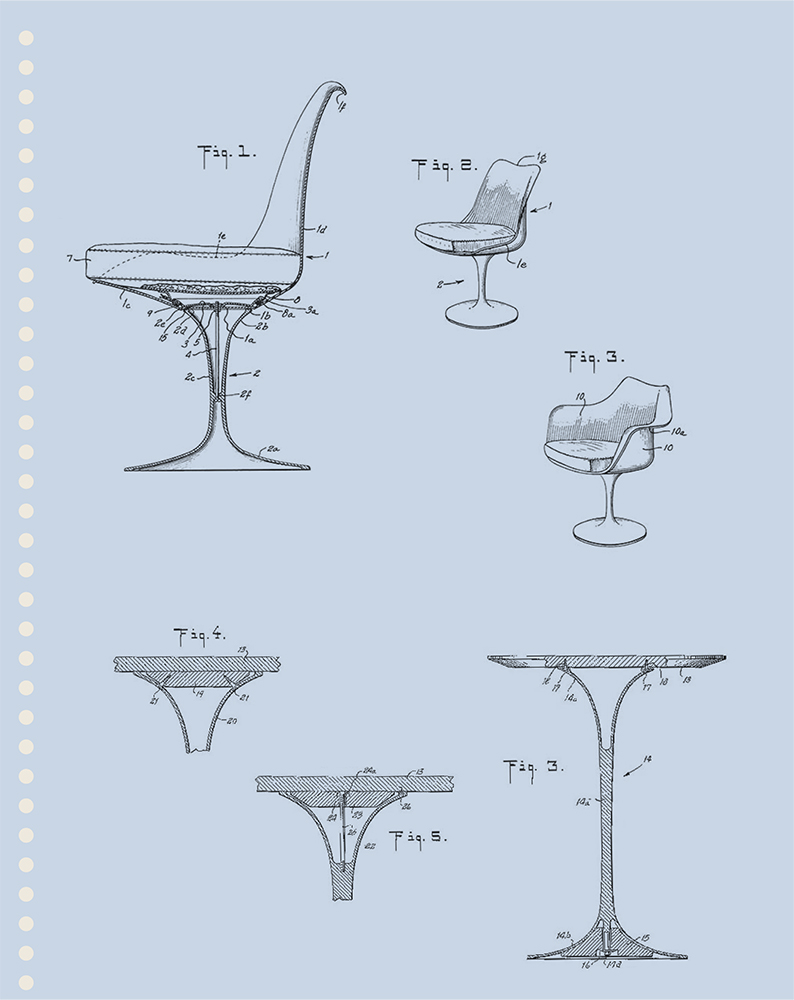
Eero Saarinen was one of the greatest designers of the 20th century. Part of his success was down to his amazing ability to fuse different elements into one whole: sculpture, design and architecture, the present and the future, Europe and America, organicism and abstraction. Born in Finland, the son of architect Eliel Saarinen and sculptor and textile designer Loja Gesellius, Eero trained in the United States at the Cranbrook School before completing his studies in Europe and his architectural training at Yale University. At Cranbrook, Saarinen met Florence Knoll, who at that time was a promising young protégé of Eliel Saarinen. When Florence joined Knoll in the 1940s, she invited Eero to design for the company. Saarinen went on to design many of Knoll’s most recognizable pieces. In addition to these achievements, Saarinen became a leader of the second-generation modernists. Among his outstanding projects are the Dulles International Airport in Washington, D.C., the Gateway Arch in St. Louis, New York’s CBS Building and the TWA Terminal at Kennedy International Airport.
Video — Celebrate the Saarinen Collection
Saarinen Collections – Moodboards
In keeping with the philosophy of “Modern Always”, Knoll has created a collection of products capable of perfectly interpreting the brand’s values: timeless image and the coherent design with which the company has always been identified, skillfully combining uniqueness and comfort. Knoll’s revolutionary idea was, from the start, not to think about the individual furnishing element, but about the space. This approach led to products where functionality and aesthetic value are on the same level. Pieces designed in different periods of time, but belonging to the same design philosophy, the one started by Florence Knoll who adapted Modernist principles to create a new “total design” approach.
